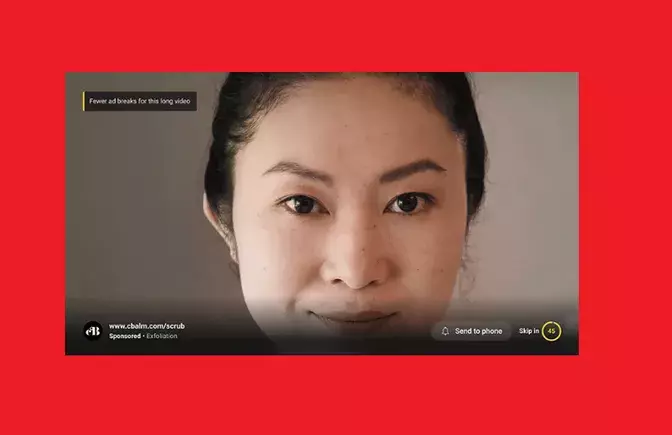YouTube has recently announced its plans to introduce longer ad breaks in order to provide uninterrupted content within its Connected TV experiences. This decision comes after research showed that the majority of YouTube viewers prefer video ads to be grouped together, rather than dispersed throughout a video.
By implementing longer ad breaks in CTV, YouTube aims to extend viewing sessions before the next ad break by 50%. This move is intended to enhance the viewer experience by reducing interruptions while still allowing viewers the option to skip ads after five seconds. Additionally, advertisers will have more opportunities to connect with their target audience while minimizing disruptions to viewing sessions.
While this approach may seem advantageous for both viewers and advertisers, there are concerns about the potential impact on ad response rates. The ability for viewers to start a video and walk away during the initial ad block, combined with the countdown timer for ads, could potentially lead to reduced engagement with the advertisements. In a landscape where attention spans are shrinking, the effectiveness of longer ad blocks remains questionable.
Monitoring Results
For YouTube marketers, it is crucial to monitor the results of these longer ad breaks to gauge their impact on advertising effectiveness. Since most YouTube promotions focus on awareness rather than direct response, measuring the true impact of these changes can be challenging. However, staying informed about viewer preferences and behaviors is essential for optimizing ad strategies on the platform.
The introduction of longer ad breaks on YouTube raises interesting questions about the balance between viewer experience and advertising effectiveness. While disruptive, shorter ads may grab more attention, they could also lead to reduced response and sentiment. On the other hand, longer ad blocks may be more easily ignored by viewers, potentially affecting ad engagement. Understanding the trade-offs between these two approaches is crucial for advertisers looking to maximize the impact of their YouTube promotions.
YouTube’s decision to incorporate longer ad breaks in CTV experiences reflects its commitment to enhancing the viewer experience while providing advertisers with more opportunities to connect with their target audience. However, the potential implications of these changes on ad response rates and viewer engagement remain to be seen. By closely monitoring the results and adapting strategies accordingly, YouTube marketers can navigate the evolving landscape of digital advertising effectively.


Leave a Reply